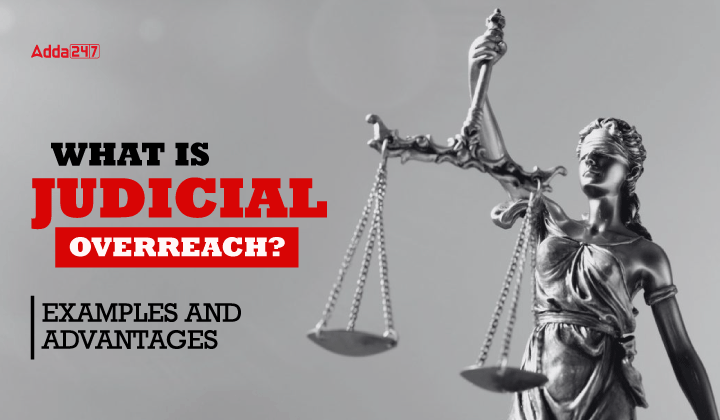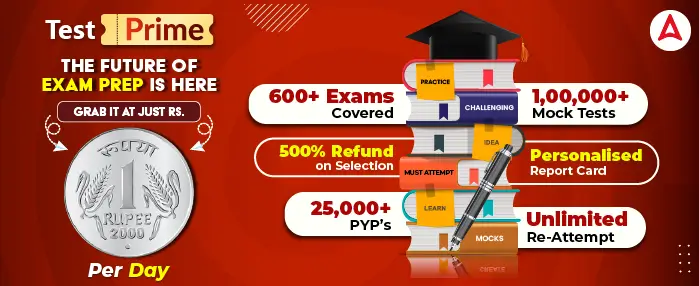Table of Contents
In democratic Nations, the principle of separation of powers ensures that the legislative, executive, and judiciary function independently, maintaining checks and balances on each other. However, when one branch oversteps its role, it can disrupt this delicate balance. One such instance is judicial overreach—a situation where the Judiciary exceeds its Constitutional mandate and interferes in matters reserved for the Legislative or Executive branches. This article explores judicial overreach, its examples, distinctions from judicial activism, its impact on governance, and its potential advantages in safeguarding democracy.
What is Judicial Overreach?
Judicial overreach occurs when Courts take a proactive stance beyond their Constitutional role of interpreting laws. In such instances, Courts may issue rulings that effectively create new laws or shape public policies, areas traditionally reserved for the legislative or executive branches. Unlike judicial activism, where the Judiciary interprets laws to protect citizens’ rights in cases of government inaction or failure, judicial overreach crosses into legislative functions, potentially infringing on the separation of powers.
While judicial intervention is necessary to ensure justice, overreach becomes problematic when Courts engage in activities meant for elected representatives. This not only upsets the Constitutional balance but also leads to judicial adventurism, where Judges take on roles outside their expertise, such as economic or policy decisions.
Examples of Judicial Overreach
Several landmark cases in India have raised concerns about judicial overreach. Some notable examples include:
1. National Anthem in Cinemas (Shyam Narayan Chouksey v. Union of India, 2016):
The Supreme Court mandated that the National Anthem be played in cinemas before a feature film. This decision, viewed as an unnecessary imposition of patriotism, raised concerns about the Judiciary’s interference in everyday life.
2. Liquor Ban Near Highways (2017):
In a Public Interest Litigation (PIL), the Supreme Court banned the sale of liquor within 500 meters of National and State highways. The decision, aimed at reducing road accidents, was criticized for overstepping administrative duties typically handled by the executive branch.
3. 2G Spectrum Case (2012):
The Supreme Court canceled 122 telecom licenses, citing irregularities in allocation. While intended to address corruption, the judgment affected the economy and raised concerns about the judiciary’s intervention in economic policy, a domain usually reserved for the executive.
4. Lodha Committee Recommendations for BCCI:
In an attempt to reform Indian cricket, the Supreme Court directed the Board of Control for Cricket in India (BCCI) to implement the Lodha Committee’s recommendations. Critics argued that the Judiciary was intruding into the internal functioning of an autonomous sports body.
Judicial Overreach vs Judicial Activism
It is crucial to distinguish between judicial activism and judicial overreach. Judicial activism occurs when the judiciary steps in to uphold the rights of citizens when other branches fail to act. For example, in the Vishaka v. State of Rajasthan (1997) case, the Supreme Court issued guidelines to prevent sexual harassment in workplaces in the absence of legislation, filling a legislative vacuum.
On the other hand, judicial overreach refers to instances where the Judiciary crosses Constitutional boundaries and assumes the roles of the Executive or Legislature. This typically happens when the Courts begin making or modifying laws or making decisions on policy matters without adequate Constitutional authority. While judicial activism is often seen as a necessary check on government power, overreach undermines the principle of separation of powers.
Impact of Judicial Overreach in India
Judicial overreach has far-reaching implications for India’s democracy and governance:
- Undermines the Separation of Powers: When the Judiciary takes on roles reserved for the Executive or Legislature, it disrupts the balance of power. This can weaken democratic institutions and create friction between the branches of government.
- Loss of Public Confidence: Frequent judicial interventions in areas beyond the Judiciary’s domain may erode public trust in both the Judiciary and other branches of government. Over time, this could lead to a lack of faith in the judicial process itself.
- Delays in Justice Delivery: By engaging in administrative or policy decisions, the Judiciary may divert attention from its primary function—delivering justice. This can lead to a backlog of cases and delayed justice for litigants.
- Economic and Policy Implications: Judicial interference in policy decisions, as seen in the 2G Spectrum case, can have long-term consequences on the economy and governance, creating uncertainty in markets and discouraging investments.
The Advantages of Judicial Overreach
Despite its criticisms, judicial overreach can have certain advantages, particularly when the other branches fail to act:
- Protecting Fundamental Rights: When the executive or legislature neglects to safeguard basic rights, judicial overreach can ensure citizens are protected. In Maneka Gandhi v. Union of India (1978), the Supreme Court expanded the scope of Article 21 (Right to Life) to include the right to live with dignity.
- Holding Government Accountable: Judicial overreach acts as a mechanism for enforcing checks and balances. In cases of governmental inactivity, courts can step in to prevent abuse of power and uphold constitutional values.
- Promoting Governance Transparency: The judiciary’s involvement often brings greater scrutiny to executive actions, ensuring transparency and accountability in governance.
The 99th Amendment to the Constitution and the NJAC Bill
The 99th Constitutional Amendment and the National Judicial Appointments Commission (NJAC) Bill were attempts by the Indian Parliament to reform the judicial appointments process. However, the Supreme Court struck down both as unconstitutional in 2015, asserting the primacy of judicial independence. While the decision ensured the judiciary’s autonomy, it also sparked debates on judicial overreach, with critics arguing that the judiciary was safeguarding its power at the cost of democratic reforms.
Conclusion
Judicial overreach remains a contentious issue in India’s Constitutional framework. While it has advantages in safeguarding citizens’ rights and promoting government accountability, it can also undermine the principle of separation of powers. The Judiciary must strike a careful balance between activism and restraint to preserve its role as the guardian of the Constitution while ensuring democratic institutions function effectively.



 TSPSC Group 1 Question Paper 2024, Downl...
TSPSC Group 1 Question Paper 2024, Downl...
 TSPSC Group 1 Answer key 2024 Out, Downl...
TSPSC Group 1 Answer key 2024 Out, Downl...
 UPSC Prelims 2024 Question Paper, Downlo...
UPSC Prelims 2024 Question Paper, Downlo...





